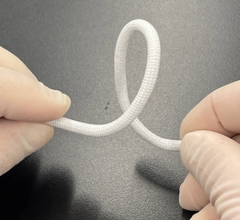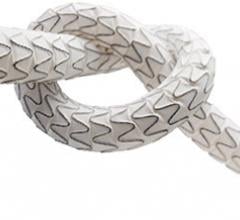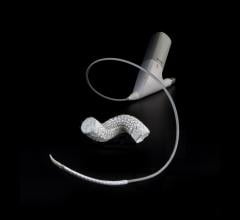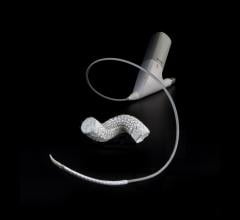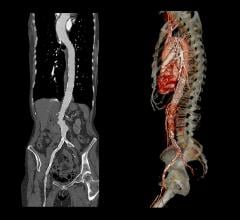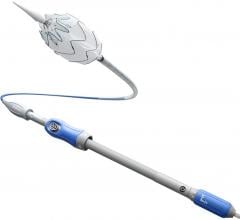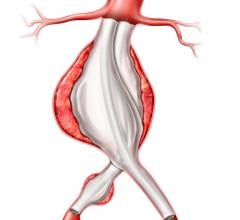November 19, 2012 — New endovascular grafting techniques to repair tissue following abdominal aortic aneurysm rupture are generating growing enthusiasm among vascular surgeons, and a number of those new treatment options were presented at the 39th VEITHsymposium held in New York City Nov. 14 to 18.
The new techniques — chimney, sandwich and periscope grafts, sometimes referred to as CHIMPS — may prove to be especially useful in emergency situations, when vascular surgeons do not have the luxury of time to custom-craft a grafting device for the patient in need.
Minimally invasive endovascular procedures to deploy stents as scaffolding for damaged blood vessels have been proven effective in aortic aneurysm repair for years now, with results comparable to those from conventional open surgery. However, stenting is not a viable treatment option for all AAA patients, but rather is limited to those for whom the grafts will not compromise the intricate nexus of arterial vessels that supply the kidneys and other visceral organs.
In particularly complex cases, endovascular surgeons may turn to fenestrated or branched grafts, but these procedures require the surgeon to customize the grafting device to conform with each patient’s unique anatomy. Mapping the location of the aneurysm and the patient’s anatomy, and then tailoring the device require significant lead time of at least six weeks in most cases. In addition, fenestrated and branched graft devices are significantly more costly and require special training to deploy.
Although still awaiting in-depth clinical trials to evaluate their effectiveness, CHIMPS may offer an off-the-shelf solution to both the time and expense of those procedures, allowing vascular surgeons to use pre-fabricated stents in place of the more elaborate fenestrated or branched devices. They also may be easier for the surgeon to deploy.
A special session of the VEITHsymposium on Friday morning, Nov. 16, took up the issue of CHIMPS, with experts presenting analysis of outcomes, tips on placement technique, factors to consider when deciding whether to use CHIMPS and what precautions must be taken.
For more information: www.veithpress.org

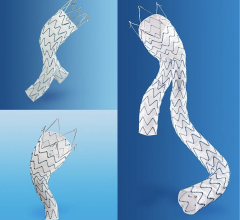
 April 26, 2023
April 26, 2023 

